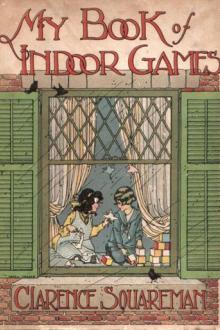Genre Literary Collections. Page - 14

n the political side.
New inventions, new machines, new methods of transportation and intercourse are making over the whole scene of action year by year. It is an absolute impossibility to educate the child for any fixed station in life. So far as education is conducted unconsciously or consciously on this basis, it results in fitting the future citizen for no station in life, but makes him a drone, a hanger-on, or an actual retarding influence in the onward movement. Instead of caring for himself and for others, he becomes one who has himself to be cared for. Here, too, the ethical responsibility of the school on the social side must be interpreted in the broadest and freest spirit; it is equivalent to that training of the child which will give him such possession of himself that he may take charge of himself; may not only adapt himself to the changes that are going on, but have power to shape and direct them.
Apart from participation in social life, the school has no moral end nor aim. As long

CK AND RAILS. Also there are certain minorobjects--tin ships, Easter eggs, and the like--of which I shall makeincidental mention, that like the kiwi and the duck-billed platypusrefuse to be classified.
These we arrange and rearrange in various ways upon our floor, making aworld of them. In doing so we have found out all sorts of pleasantfacts, and also many undesirable possibilities; and very probably ourexperience will help a reader here and there to the former and save himfrom the latter. For instance, our planks and boards, and what one cando with them, have been a great discovery. Lots of boys and girls seemto be quite without planks and boards at all, and there is no regulartrade in them. The toyshops, we found, did not keep anything of the kindwe wanted, and our boards, which we had to get made by a carpenter, arethe basis of half the games we play. The planks and boards we have areof various sizes. We began with three of two yards by one; they weremade with cross pieces like small door

ken in the history of theworld. The South Gardens adjoin the Avenue of Palms and extend to theExposition enclosure along the south boundary line, where a wall fiftyfeet high and ten feet wide has been erected of a solid green moss-likegrowth, studded with myriads of tiny pink star-like blossoms. This greatwall is perforated by simple arched masonry entrances, leading rough therichly planted foreground formed by the South Gardens.
Basins of reflecting blue waters extend to the right and left of acentral fountain of colossal proportions. The basins themselves arepunctuated at their east and west ends by fountains of subordinate size,back of which are Festival Hall to the right and the Palace ofHorticulture to the left, as we enter the green wall portals from thecity of San Francisco beyond. To the south and west of the ForeignCountries, States Buildings and Gardens, a graceful contour of hillsextends, sloping onward to Golden Gate, and having a coxcomb of pine andeucalyptus. Broad vistas of cit

ut onemonth; in winter, when about three months old, on pleasant days, beingkept in, the sun and out of the wind.
What are the best hours for airing out of doors?
In summer and early autumn a child may be out almost any time betweenseven in the morning and sunset; in winter and early spring, a youngchild only between 10 or 11 A.M. and 3 P.M., although this dependssomewhat upon the climate. In New York and along the Atlantic coastthe early mornings are apt to be damp and the afternoons raw andcloudy.
On what kind of days should a baby not go out?
In sharp winds, when the ground is covered with melting snow, and whenit is extremely cold. A child under four months old should not usuallygo out if the thermometer is below freezing point; nor one under eightmonths old if it is below 20° F.
_What are the most important things to be attended to when the childis out in its carriage?_
To see that the wind never blows in its face, that its feet areproperly covered and warm

But Johnny Chuck is lazy and does not like to go far from his own doorstep, so when Peter called the next morning Johnny refused to go, despite all Peter could say. Peter didn't waste much time arguing for he was afraid he would be late and miss something. When he reached the Green Forest he found his cousin, Jumper the Hare, and Chatterer the Red Squirrel, and Happy Jack the Gray Squirrel, already there. As soon as Peter arrived Old Mother Nature began the morning lesson.
Happy Jack," said she, "you may tell us all you know about your cousin, Chatterer."
"To begin with, he is the smallest of the Tree Squirrels," said Happy Jack. "He isn't so very much bigger than Striped Chipmunk, and that means that he is less than half as big as myself. His coat is red and his waistcoat white; his tail is about two-thirds as long as his body and flat but not very broad. Personally, I don't think it is much of a tail."
At once Chatterer's quick temper flared up and he began to scold. But Old Mother Nature silenced him and told

staff, Telling me neither to smile nor to laugh. Buff says 'Baff,' to all his men, And I say 'Baff' to you again. And he neither laughs nor smiles, In spite of all your cunning wiles, But carries his face with a very good grace, And passes his staff to the very next place."
If he can repeat all this without laughing, he delivers up his staff to some one else, and takes his seat; but if he laughs, or even smiles, he pays a forfeit before giving it up.
* * * * *
BLIND MAN'S BUFF
In the olden times this game was known by the name of "Hood-man Blind," as in those days the child that was chosen to be "blind man" had a hood placed over his head, which was fastened at the back of the neck.
In the present day the game is called "Blind Man's Buff," and very popular it is among young folk.
[Illustration]
Before beginning to play, the middle of the room should be cleared, the chairs placed against the wall, and all toys and footstools put out of the way. The child having

er of these. There was not even a chair, or a small table, or a bit of tin or crockery. Nothing! The jailer stood by when he ate, then took away the wooden spoon and bowl which he had used.
One by one these things sank into the brain of The Thinking Machine. When the last possibility had been considered he began an examination of his cell. From the roof, down the walls on all sides, he examined the stones and the cement between them. He stamped over the floor carefully time after time, but it was cement, perfectly solid. After the examination he sat on the edge of the iron bed and was lost in thought for a long time. For Professor Augustus S. F. X. Van Dusen, The Thinking Machine, had something to think about.
He was disturbed by a rat, which ran across his foot, then scampered away into a dark corner of the cell, frightened at its own daring. After awhile The Thinking Machine, squinting steadily into the darkness of the corner where the rat had gone, was able to make out in the gloom many littl

st of Illustrations
Roald Amundsen Approximate Bird's-eye View, Drawn from the First Telegraphic Account Reproduced by permission of the Daily Chronicle The Opening of Roald Amundsen's Manuscript Helmer Hanssen, Ice Pilot, a Member of the Polar Party The "Fram's" Pigsty The Pig's Toilet Hoisting the Flag A Patient Some Members of the Expedition Sverre Hassel Oscar Wisting In the North-east Trades In the Rigging Taking an Observation Ronne Felt Safer when the Dogs were Muzzled Starboard Watch on the Bridge Olav Bjaaland, a Member of the Polar Party 136 In the Absence of Lady Partners, Ronne Takes a Turn with the Dogs An Albatross In Warmer Regions A Fresh Breeze in the West Wind Belt The Propeller Lifted in the Westerlies The "Fram's" Saloon Decorated for Christmas Eve Ronne at a Sailor's Job The "Fram" In Drift-ice Drift-ice in Ross Sea A Clever Method of Landing The "Fram" under Sail Cape Man's Head on the Barrier Seal-hunting The "Fram" The Crew of the "Fram" in the Bay of Whales The "Fram" in the Ba

s," he said. "The same thing we talked about last month. But why were we tipped off in advance?"
"It's one more piece in the pattern," I said. "If the tip's on the level, then they're stepping up the program."
Within three days, reports began to pour in--from Peru, Cuba, Mexico, Turkey, and other parts of the world. Then on March 9 a gleaming metallic disk was sighted over Dayton, Ohio. Observers at Vandalia Airport phoned Wright-Patterson Field. Scores of Air Force pilots and groundmen watched the disk, as fighters raced up in pursuit. The mysterious object streaked vertically skyward, hovered for a while miles above the earth, and then disappeared. A secret report was rushed to the Civil Aeronautics Authority in Washington, then turned over to Air Force Intelligence.
Soon after this Dr. Craig Hunter, director of a medical supply firm, reported a huge elliptical saucer flying at a low altitude in Pennsylvania. He described it as metallic, with a slotted outer rim and a rotating ring just

year 1777, you informed me of the great success you had met with in curing dropsies by means of the fol. Digitalis, which you then considered as a more certain diuretic than any you had ever tried. Some time afterwards, Mr. Russel, surgeon, of Worcester, having heard of the success which had attended some cases in which you had given it, requested me to obtain for him any information you might be inclined to communicate respecting its use. In consequence of this application, you wrote to me in the following terms.[3]
[Footnote 3: See the extract from this letter at page 5.]
In a letter which I received from you in London, dated September 29, 1778, you write as follows:--"I wish it was as easy to write upon the Digitalis--I despair of pleasing myself or instructing others, in a subject so difficult. It is much easier to write upon a disease than upon a remedy. The former is in the hands of nature, and a faithful observer, with an eye of tolerable judgment, cannot fail to delineate a like